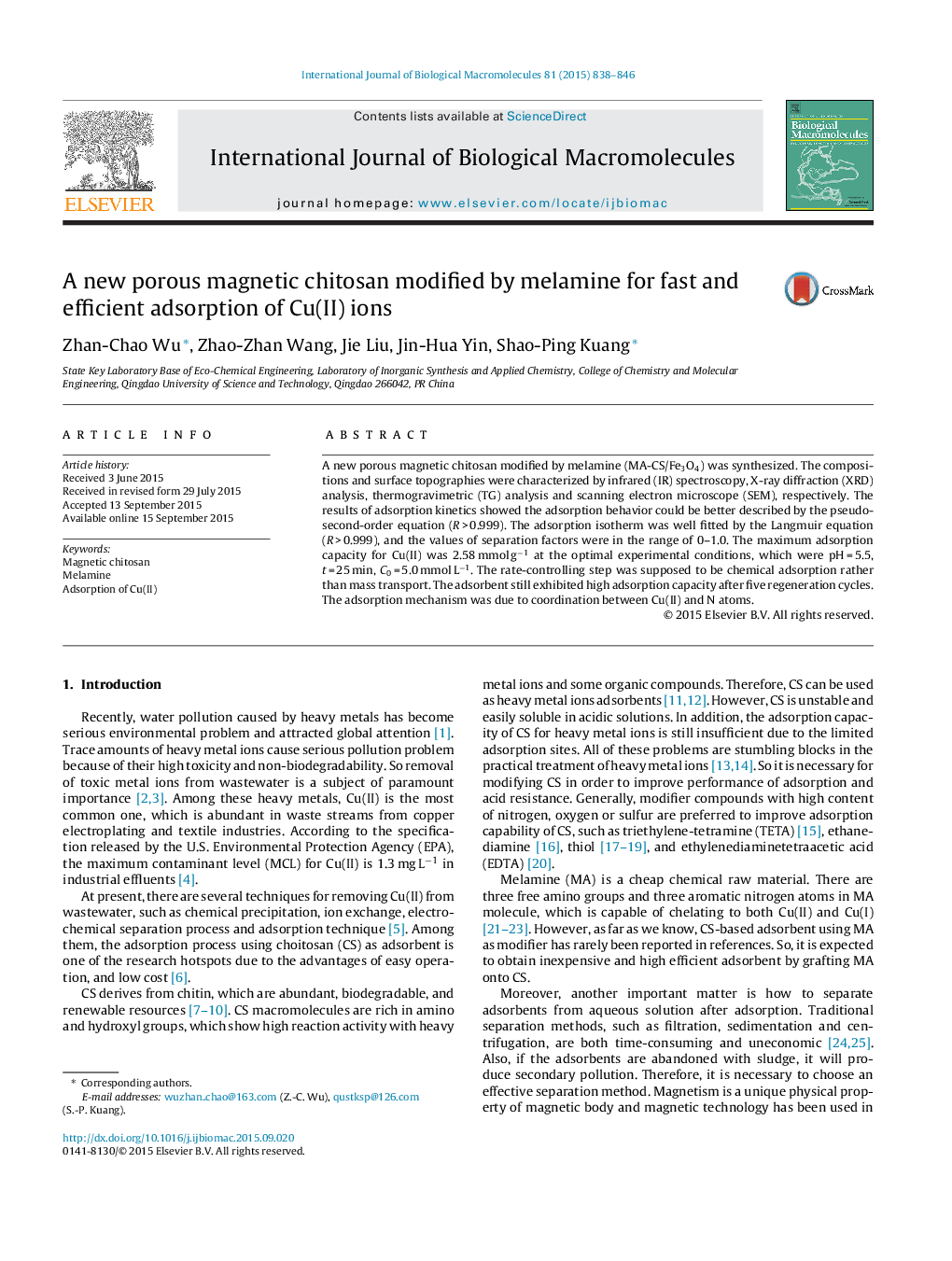| Article ID | Journal | Published Year | Pages | File Type |
|---|---|---|---|---|
| 8330799 | International Journal of Biological Macromolecules | 2015 | 9 Pages |
Abstract
A new porous magnetic chitosan modified by melamine (MA-CS/Fe3O4) was synthesized. The compositions and surface topographies were characterized by infrared (IR) spectroscopy, X-ray diffraction (XRD) analysis, thermogravimetric (TG) analysis and scanning electron microscope (SEM), respectively. The results of adsorption kinetics showed the adsorption behavior could be better described by the pseudo-second-order equation (R > 0.999). The adsorption isotherm was well fitted by the Langmuir equation (R > 0.999), and the values of separation factors were in the range of 0-1.0. The maximum adsorption capacity for Cu(II) was 2.58 mmol gâ1 at the optimal experimental conditions, which were pH = 5.5, t = 25 min, C0 = 5.0 mmol Lâ1. The rate-controlling step was supposed to be chemical adsorption rather than mass transport. The adsorbent still exhibited high adsorption capacity after five regeneration cycles. The adsorption mechanism was due to coordination between Cu(II) and N atoms.
Keywords
Related Topics
Life Sciences
Biochemistry, Genetics and Molecular Biology
Biochemistry
Authors
Zhan-Chao Wu, Zhao-Zhan Wang, Jie Liu, Jin-Hua Yin, Shao-Ping Kuang,
